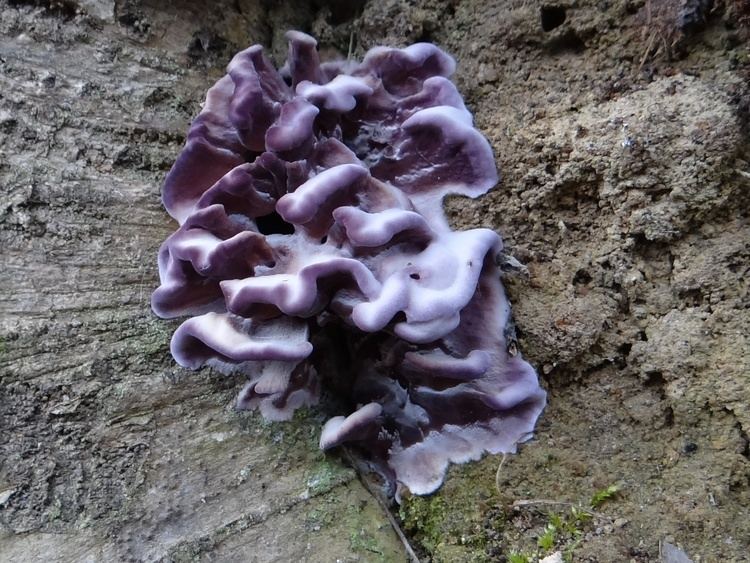Kingdom Fungi Family Meruliaceae Rank Species | Division Basidiomycota Genus Chondrostereum Higher classification Chondrostereum Order Polyporales | |
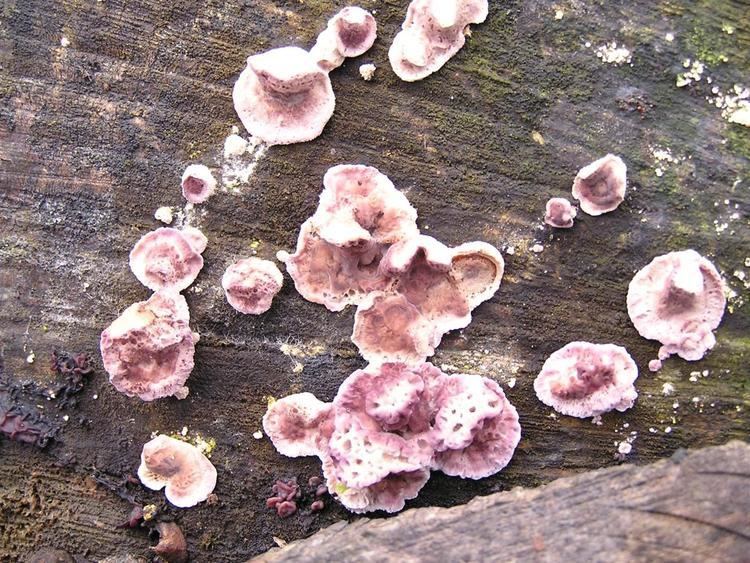 | ||
Similar Stereum, Stereum hirsutum, Bjerkandera adusta, Exidia, Daedaleopsis confragosa | ||
Silver leaf fungus chondrostereum purpureum on cherry in kirktonhall glen west kilbride
Silver leaf is a fungal disease of trees caused by the fungus plant pathogen Chondrostereum purpureum. It attacks most species of the rose family Rosaceae, particularly the genus Prunus. The disease is progressive and often fatal. The common name is taken from the progressive silvering of leaves on affected branches. It is spread by airborne spores landing on freshly exposed sapwood. For this reason cherries and plums are pruned in summer, when spores are least likely to be present and when disease is visible. Silver Leaf can also happen on poming fruits like apples and pears. Plums are especially vulnerable.
Contents
- Silver leaf fungus chondrostereum purpureum on cherry in kirktonhall glen west kilbride
- Silver leaf chondrostereum purpureum 2012 11 04
- Characteristics
- A biological control agent
- References

In the past the name Stereum purpureum Pers. was widely used for this fungus, but according to modern taxonomy it is only distantly related to Stereum, actually belonging to order Polyporales whereas Stereum is in order Russulales.

Silver leaf chondrostereum purpureum 2012 11 04
Characteristics
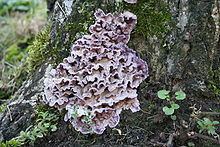
After starting as just a crust on the wood, the fruiting structure develops undulating intergrowing brackets up to about 3 cm broad, which have a tough rubbery texture. The edges and fertile lower surfaces show a fairly vivid violet colour while the fungus is growing, and the upper surfaces have a grey aspect (sometimes with zonation) and are covered with whitish hairs. After a week or two the fructification dries out, becomes brittle, and turns a drab brown or beige. Infected wood can be recognized because it is stained a darker tint.
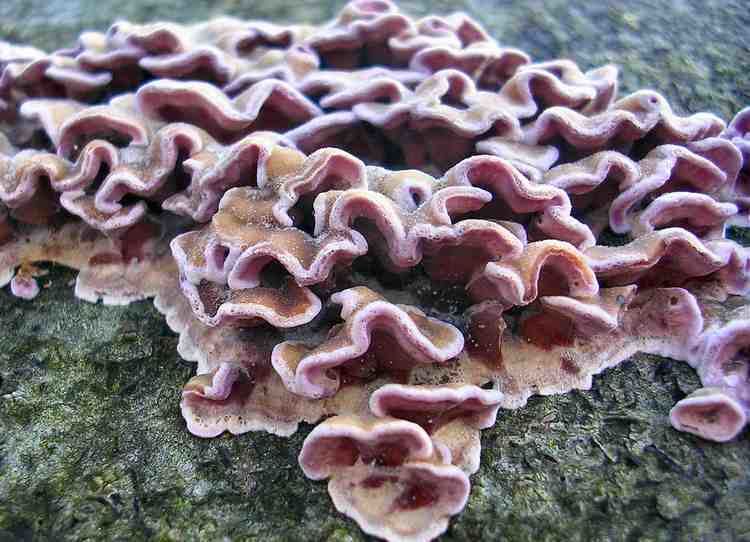
The spores are rounded cylinders approximately 5-8 µm x 3-4 µm in size. The hyphal structure is monomitic with clamp connections.
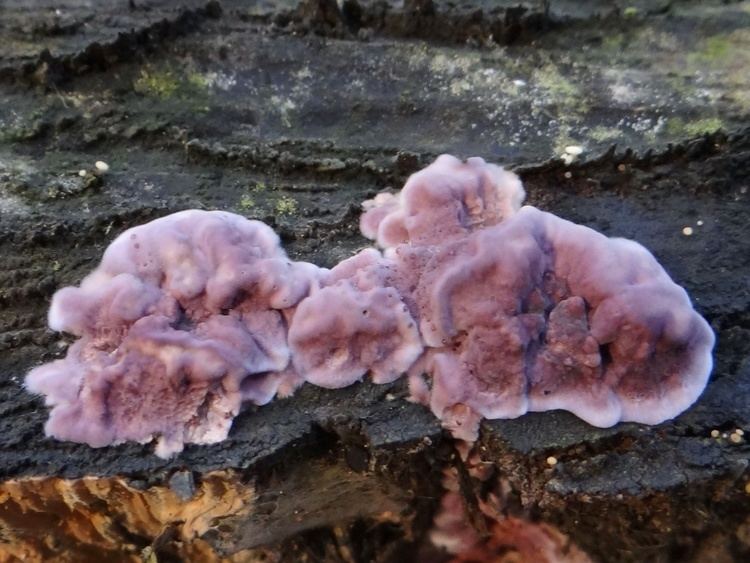
It is often found on old stumps and dead wood, but can also be a serious parasite of living trees. As well as plum trees it attacks many other broad-leafed species (other Prunus, apple, pear, willow, poplar, maple, hornbeam, plane, oak, elm, lilac, and many others). Occasionally it also infects conifers (fir, spruce, Thuja, ...). Geographically it is roughly speaking just as widespread as its hosts - it is common in woods, orchards and tree plantations in temperate climates.
A biological control agent

Chondrostereum purpureum is commercially available as a method of combatting forest "weed" trees such as red alder, aspens and other species. The fungus is applied directly to the weed trees in a nutrient paste which can be stored and handled conveniently. According to a report of the Canadian Pest Management Agency, the use of this control method will only have a limited impact on non-target trees since the fungal spores are ubiquitous anyway and healthy trees are resistant to attack.
